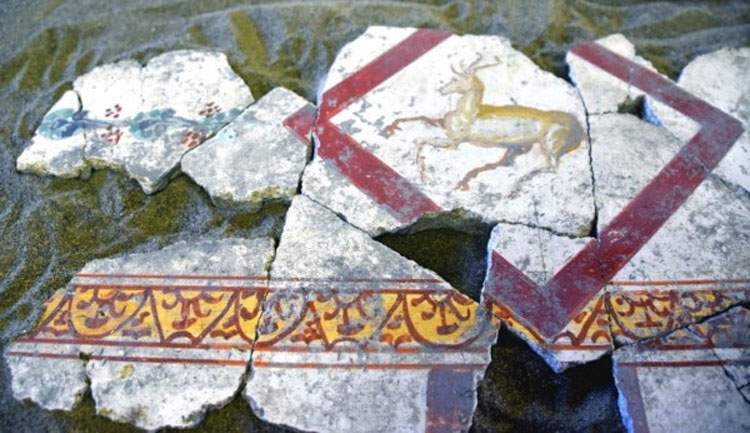Pompeii, for the first time a robot reassembles thousands of fresco fragments
For the first time, cutting-edge technology will be used to reconstruct archaeological artifacts that are largely fragmented and difficult to reassemble. Thousands of fragments of frescoes from the House of Painters at Work and the Schola Armatorarum will be reassembled thanks to acutting-edge robotic infrastructure.
Thus kicked off on Sept. 1 the RePAIR project, an acronym for Reconstruction the past: Artificial Intelligence and Robotics meet Cultural Heritage.
Like small pieces of a jigsaw puzzle, thousands of fragments will be rearranged with the use of a robotic infrastructure, equipped with mechanical arms capable of scanning the fragments, recognizing them through a 3D digitizing system and returning them to their proper locations. While the fragments are recognized and scanned, precision mechanical arms and hands manipulate and move them with the help of state-of-the-art sensors capable of preventing even the slightest damage.
The subject of the experimentation will be the frescoes on the ceiling of the House of Painters at Work in the Insula of the Casti Amanti, which were damaged during the eruption of 79 A.D. and then shattered as a result of World War II bombings.
Already since 2018, a group of mural painting experts from the University of Lausanne, led by Professor Michel E. Fuchs, has been working with a program of study and manual recomposition that is based on the analysis of the different morphological, stylistic and technical aspects of the fragments. The activation of the new project, which will proceed in parallel and in a coordinated manner with the one under way by the Swiss team, will allow the comparison of two working methodologies and their respective results.
The second case study will also consist of the fragments of the frescoes of the Schola Armaturarum, which were determined by the building’s collapse in 2010 and some of which have not yet been relocated. Two iconic examples of great frescoes of the world’s cultural heritage that are in a fragmentary state and are stored in the deposits of the Pompeii Archaeological Park.
This activity relies on the interdisciplinary input of scientific and research institutions working in the fields of computer vision, robotics, and Artificial Intelligence, with key contributions from Archaeology and Cultural Heritage Conservation.
Partners in the RePAIR project, along with the Archaeological Park of Pompeii are Ca’ Foscari University of Venice, Ben-Gurion University of the Negev in Israel, IIT-Italian Institute of Technology, Associacao do Instituto Superior Tecnico Para a Investigacao e Desenvolvimento of Portugal, Rheinische Friedrich Wilhelms Universitat of Bonn in Germany, and the Ministry of Culture. The project is also supported by funding under the European Union’s Horizon 2020 research and innovation program, under Grant agreement No. 964854.
“Amphorae, frescoes, mosaics, are often brought to light fragmented, only partially intact or with many parts missing,” said Pompeii Archaeological Park director Gabriel Zuchtriegel. “When the number of fragments is very large, with thousands of pieces, manual reconstruction and recognition of the connections between fragments is almost always impossible or otherwise very laborious and slow. This causes several finds to lie in archaeological deposits for a long time, unable to be reconstructed and restored, let alone returned to public attention. The RePAIR project, the result of research and technological expertise, with the help of robotics, digitization and artificial intelligence, aims to solve an atavistic problem.”
 |
| Pompeii, for the first time a robot reassembles thousands of fresco fragments |
Warning: the translation into English of the original Italian article was created using automatic tools. We undertake to review all articles, but we do not guarantee the total absence of inaccuracies in the translation due to the program. You can find the original by clicking on the ITA button. If you find any mistake,please contact us.





























